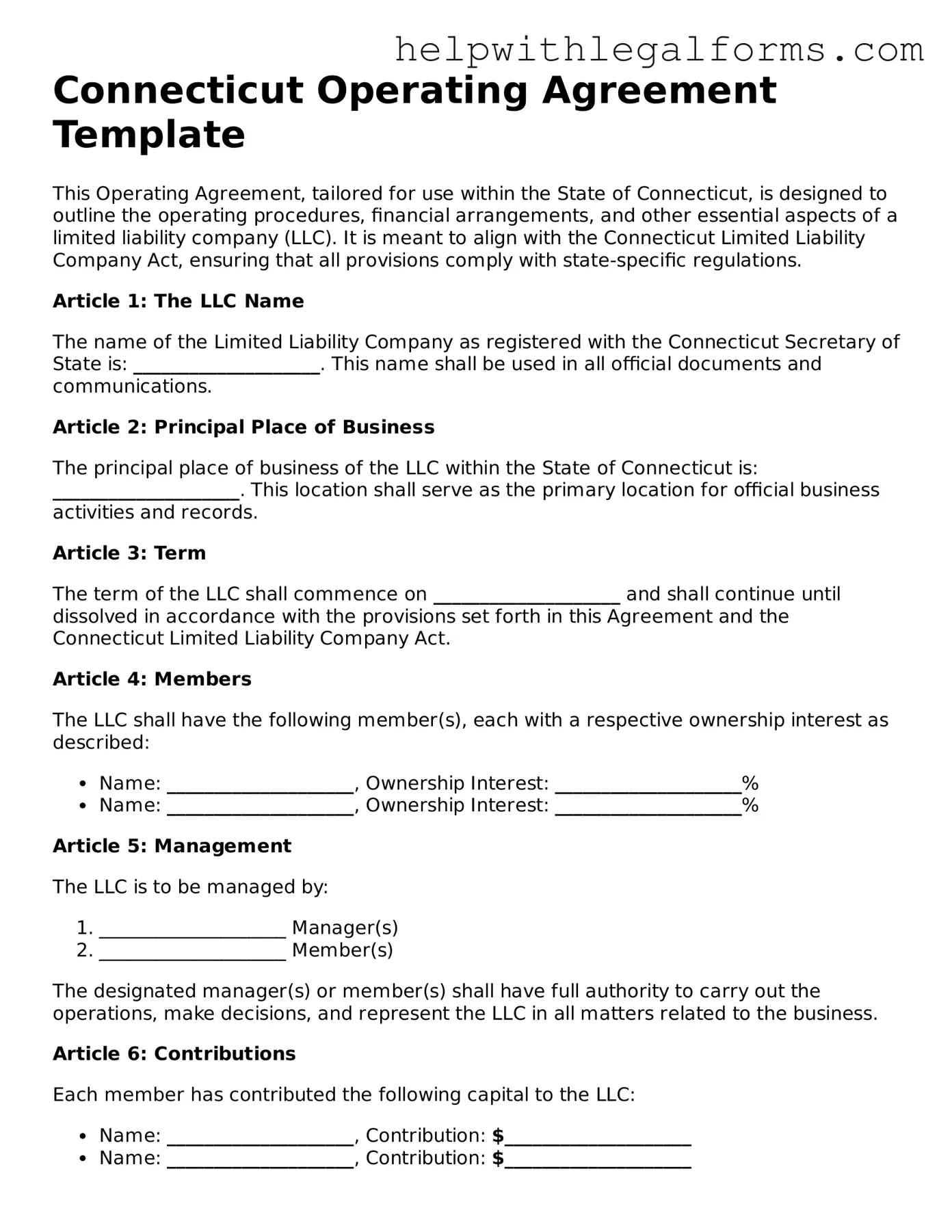Connecticut Operating Agreement Template
This Operating Agreement, tailored for use within the State of Connecticut, is designed to outline the operating procedures, financial arrangements, and other essential aspects of a limited liability company (LLC). It is meant to align with the Connecticut Limited Liability Company Act, ensuring that all provisions comply with state-specific regulations.
Article 1: The LLC Name
The name of the Limited Liability Company as registered with the Connecticut Secretary of State is: ____________________. This name shall be used in all official documents and communications.
Article 2: Principal Place of Business
The principal place of business of the LLC within the State of Connecticut is: ____________________. This location shall serve as the primary location for official business activities and records.
Article 3: Term
The term of the LLC shall commence on ____________________ and shall continue until dissolved in accordance with the provisions set forth in this Agreement and the Connecticut Limited Liability Company Act.
Article 4: Members
The LLC shall have the following member(s), each with a respective ownership interest as described:
- Name: ____________________, Ownership Interest: ____________________%
- Name: ____________________, Ownership Interest: ____________________%
Article 5: Management
The LLC is to be managed by:
- ____________________ Manager(s)
- ____________________ Member(s)
The designated manager(s) or member(s) shall have full authority to carry out the operations, make decisions, and represent the LLC in all matters related to the business.
Article 6: Contributions
Each member has contributed the following capital to the LLC:
- Name: ____________________, Contribution: $____________________
- Name: ____________________, Contribution: $____________________
Additional contributions shall be subject to the terms outlined in this Agreement and agreed upon by all members.
Article 7: Distributions
Profits and losses shall be distributed to the members annually in proportion to their respective ownership interests, as described in Article 4, unless otherwise agreed upon.
Article 8: Changes and Amendments
Any changes or amendments to this Operating Agreement must be made in writing and require the unanimous consent of all members.
Article 9: Dissolution
Upon the dissolution of the LLC, assets shall be distributed to the members in accordance with their ownership interests after settling all debts and obligations.
This Operating Agreement is executed on ____________________ by the members, who affirm to comply with the terms set forth and all applicable laws and regulations of the State of Connecticut.
Member Signature: ____________________ Date: ____________________
Member Signature: ____________________ Date: ____________________
